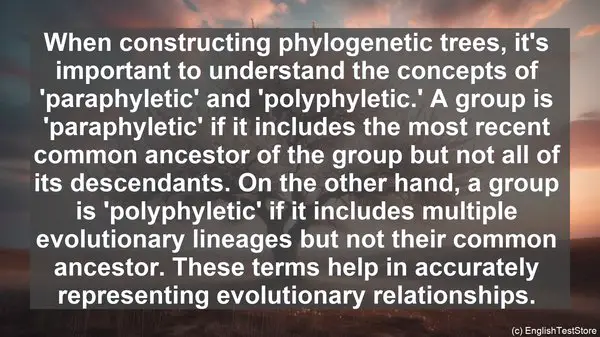Introduction
Welcome to our channel. Today, we have an exciting topic lined up for you. We’ll be diving into the world of biosystematics and exploring some commonly confused words. So, let’s get started!

1. Species vs. Specimen
One of the fundamental distinctions in biosystematics is between ‘species’ and ‘specimen.’ While ‘species’ refers to a group of organisms with similar characteristics, ‘specimen’ is an individual representative of that group. It’s important not to interchange these terms, as they have distinct meanings in scientific discussions.
2. Genus vs. Family
Another pair of words that often cause confusion is ‘genus’ and ‘family.’ ‘Genus’ is a more specific category, representing a group of closely related species. On the other hand, ‘family’ is a broader classification, encompassing multiple genera. Understanding this hierarchy is crucial for accurate taxonomic classification.

3. Homologous vs. Analogous
When it comes to studying anatomical features, ‘homologous’ and ‘analogous’ are two terms that are frequently used. ‘Homologous’ structures have a common evolutionary origin, while ‘analogous’ structures serve similar functions but have different evolutionary origins. Distinguishing between these terms is essential for understanding evolutionary relationships.
4. Phylogeny vs. Ontogeny
In the study of organisms, ‘phylogeny’ and ‘ontogeny’ are two important aspects. ‘Phylogeny’ refers to the evolutionary history and relationships of a group of organisms, while ‘ontogeny’ focuses on the development of an individual organism from fertilization to adulthood. Both these aspects provide valuable insights into the biological world.
5. Taxonomy vs. Systematics
While ‘taxonomy’ and ‘systematics’ are often used interchangeably, they have subtle differences. ‘Taxonomy’ is the science of classifying and naming organisms, whereas ‘systematics’ encompasses not just classification but also the study of evolutionary relationships. So, ‘systematics’ is a broader term that includes ‘taxonomy.’
6. Paraphyletic vs. Polyphyletic
When constructing phylogenetic trees, it’s important to understand the concepts of ‘paraphyletic’ and ‘polyphyletic.’ A group is ‘paraphyletic’ if it includes the most recent common ancestor of the group but not all of its descendants. On the other hand, a group is ‘polyphyletic’ if it includes multiple evolutionary lineages but not their common ancestor. These terms help in accurately representing evolutionary relationships.
7. Monophyletic vs. Holophyletic
Contrasting with ‘paraphyletic’ and ‘polyphyletic,’ ‘monophyletic’ and ‘holophyletic’ are terms used to describe groups in a phylogenetic tree. A ‘monophyletic’ group includes a common ancestor and all of its descendants, while a ‘holophyletic’ group includes all descendants but not their common ancestor. These terms aid in understanding the branching patterns of evolution.
8. Nomenclature vs. Classification
In the realm of biosystematics, ‘nomenclature’ and ‘classification’ are two distinct processes. ‘Nomenclature’ involves the naming of organisms, while ‘classification’ focuses on their placement in a hierarchical system. So, while ‘nomenclature’ deals with the specific names, ‘classification’ deals with the broader organization of organisms.
9. Clade vs. Grade
When discussing evolutionary relationships, ‘clade’ and ‘grade’ are two terms that often come up. A ‘clade’ is a group of organisms that includes a common ancestor and all of its descendants, while a ‘grade’ is a group with similar characteristics but not necessarily a common ancestor. Understanding these terms is crucial for accurate representation of evolutionary history.
10. Synapomorphy vs. Homoplasy
Finally, let’s talk about ‘synapomorphy’ and ‘homoplasy.’ These terms are used to describe shared characteristics among organisms. A ‘synapomorphy’ is a shared derived characteristic, indicating a common evolutionary origin, while ‘homoplasy’ refers to similar characteristics that evolved independently. Distinguishing between these terms helps in understanding the patterns of evolution.
